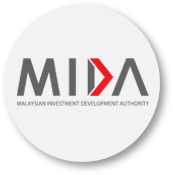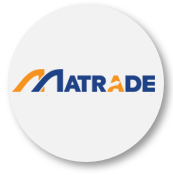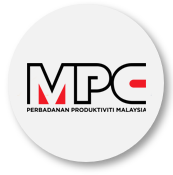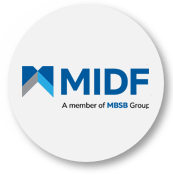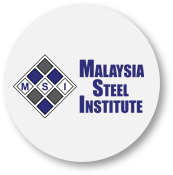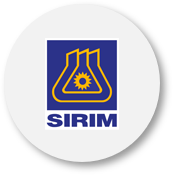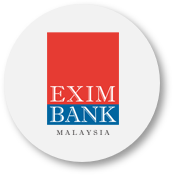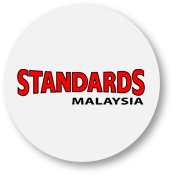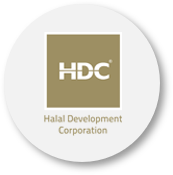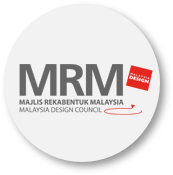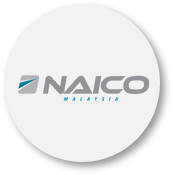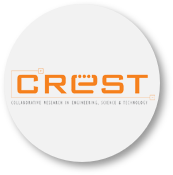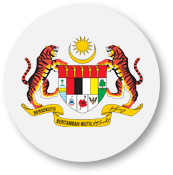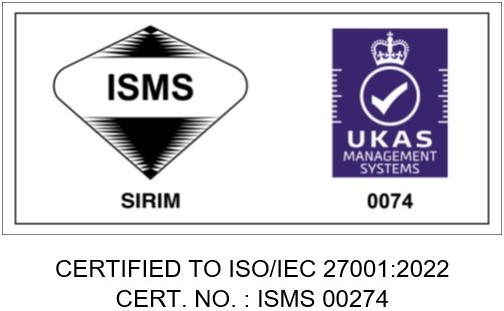Background of STA 2010
What is the Strategic Trade Act 2010?
The Strategic Trade Act (STA) 2010 [Act 708], is the legislation that controls the export, transshipment, transit and brokering of strategic items and technology, including arms and related material, as well as activities that will or may facilitate the design, development, production and delivery of weapons of mass destruction. This Act is consistent with Malaysia's international obligations on national security .
Are there other related laws to STA 2010?
The written laws related to STA 2010 are:
1. Animals Act 1953 (Act 647)
2. Atomic Energy Licnsing Act 1984 (Act 304)
3. Chemical Weapons Convention Act 2005 (Act 641)
4. Customs Act 1967 (Act 235)
5. Pesticides Act 1974 (Act 149)
6. Plant Quarantine Act 1976 (Act 167)
7. Prevention and Control of Infectious Diseases Act 1988 (Act 342)
8. Protection of New Plant Varieties Act 2004 (Act 634)
9. Poisons Act 1952 [Act366]
10. Malaysian Communications and Multimedia Commission Act 1998 [Act 589]
Please also take note that in the event of any conflict or inconsistency between the provision of this Act and those of any written laws (in relation to the prevention of the proliferation of WMD and its delivery system), including the related laws, the provision of this Act shall prevail and the conflicting or inconsistent provisions of the other written laws shal, to the extent of the conflict or inconsistency, be deemed to be superseded.
Why was the Act enacted?
In 2004, the United Nations Security Council passed a Resolution which requested member states to establish an export control system for the purpose of non - proliferation of weapons of mass destruction. As a member state, we are requested to control exports of strategic products which may be used for proliferation of weapons of mass destruction activities.
How does the Act benefit Malaysia?
The enactment and implementation of STA 2010 will benefit Malaysia in terms of:
(i) enhancing Malaysia‘s image and building confidence among foreign investors to invest in Malaysia;
(ii) facilitating and managing the exports of high technology goods and components from Malaysia to other countries;
(iii) protecting Malaysia and Malaysian exporters from being exploited by proliferators and those that profit from their activities without compromising legitimate trade of strategic items; and
(iv) promoting Malaysia as a safe country to trade with.
Compliance with this international obligation will also enable Malaysia to contribute to the maintenance of international peace and security by combating the proliferation of weapons of mass destruction.
Who is the target of this Act?
The target is any person who is engaged in the activities of export, transshipment, bringing in transit or brokering of strategic items. This includes exporters, traders, manufacturers, brokers and others who have ownership of the product when it is exported. It also includes the activity of a person who either in his own behalf or acting as an agent on behalf of another person and is directly involved in the negotiation, purchase, financing, conveying, buying, selling and supply of such items.
How does one comply with the Act?
Whenever a person/ an entity performs any activity related with export, transshipment, transit and brokering of listed and unlisted strategic items, they must obtain a permit /broker registration certificate from the relevant Authorities and keep records of transactions and relevant documents for a period required by the law.
Does STA 2010 controls Importation activity?
STA 2010 is “An Act that provides control over EXPORT, TRANSHIPMENT, TRANSIT and BROKERING of strategic items. The Act does not provide control over importation activity.
Therefore, STS is not authorised under the Act to issue any import permit nor endorse any document pertaining to importation activity. Nevertheless, importers are advised to seek guidance from related agency that oversees importation activity as stated under the Customs Act 1967 and/or other relevant laws.
Definitions and Controlled Activities
Why should I be concerned with export control compliance?
Those violating the Act are subjected to heavy penalties as prescribed in STA 2010.
What is defined as export?
Export means:
(i) to take or cause to be taken out of Malaysia any items by land, sea or air, or to place any items in a conveyance for the purpose of such items being taken out of Malaysia by land, sea or air; or
(ii) to transmit technology by any means to a destination outside Malaysia, and includes any oral or visual transmission of technology by a communication device where the technology is contained in a document the relevant part which is read out, described or otherwise displayed over the communications device in such a way as to achieve similar result (“Intangible Technology Transfer”).
What is defined as “bring in transit”?
"Bring in transit" means to bring items from any country into Malaysia by land, sea or air, where the items are to be taken out from Malaysia on the same conveyance on which they are brought into Malaysia, or any other conveyance and whether or not such items are landed or transshipped in Malaysia, but does not include the passage through Malaysia in accordance with international law of a foreign conveyance carrying any items.
What is defined as "tranship”?
"Tranship" means to remove items from the conveyance on which they were brought into Malaysia and to place the items on the same or another conveyance for the purpose of taking them out of Malaysia where these acts are carried out on a through bill of lading, through airway bill or through manifest.
What is the definition of “brokering”?
"Brokering" refers to the activity of a person who either on his own behalf or acting as an agent on behalf of another person which negotiates or arranges for the purchase, sale or supply of items from one foreign country to another foreign country; or purchases, sells or supplies such items from one foreign country to another foreign country.
Under STA 2010, a broker is required to be registered under section 19 of the Act and holds a valid broker certificate from the relevant Authority under the related laws to broker strategic items if he/she:
(i) is notified by the relevant Authority or an authorised officer;
(ii) knows; or
(iii) has reasonable grounds to suspect
that such strategic items are intended or likely to be used, wholly or in part, for or in connection with a restricted activity.
Who falls under this definition of brokers?
A broker can be a person or company, who or which is involved in the brokering activities including transaction of strategic items in a foreign country and exporting them to another foreign country. The strategic items transacted may or may not pass through Malaysia
Classification and Strategic Items List
What are the strategic items?
Strategic items refer to goods and technology that are controlled under the STA 2010. A definitive and comprehensive list of strategic items is prescribed in the Strategic Trade (Strategic Items) Order 2010. The Order reflects the items currently required to be controlled under the international export control regimes as well as the relevant United Nations Security Council Resolutions.
The items are categorized as follows:
Category ML : Military items;
Category 0 : Nuclear materials, facilities and equipment;
Category 1 : Special materials and related equipment;
Category 2 : Materials processing;
Category 3 : Electronics;
Category 4 : Computers;
Category 5: Telecommunications and information security;
Category 6 : Sensors and lasers;
Category 7 : Navigation and avionics;
Category 8 : Marine; and
Category 9 : Aerospace and propulsion
The list of Strategic Items can also be viewed in MITI‘s website via the link www.miti.gov.my> STA 2010 > Strategic Items under the STA 2010.
How will I know if the items to be exported from Malaysia are listed in the strategic items list?
It is the responsibility of exporters to determine if their products are listed as strategic items and to obtain a permit prior to export of such items.
The strategic items list is a transparent list and published in the Gazette as the Strategic Trade (Strategic Items) Order 2010.
The Strategic Trade (Strategic Items) Order 2010 is available (upon subscription) at the http://www.lawnet.com.my or can be purchased from Percetakan Nasional Berhad. Exporters may also check the list of items by logging on to www.miti.gov.my > STA 2010 > Strategic Items under the STA 2010.
Can an item that is deemed non - strategic under foreign governments’ export control law be exempted from an export permit under STA 2010?
Malaysian companies need to comply with Malaysia’s STA 2010 and refer to the Strategic Trade (Strategic Items) Order 2010 to determine if their product is controlled or not. As long as the items are listed as strategic items in the Strategic Trade (Strategic Items) Order 2010, an STA permit is required. However, companies need to also conduct their due diligence if their items are categorized as unlisted under STA 2010, which also requires them to apply for pemit.
What is Category Code and how is it different from the Customs Harmonised Commodity Description and Coding System (HS Code)?
A Category Code is an alpha - numeric classification used in the Strategic Items List to identify controlled items and to determine the relevant authority involved in issuing the export permit.
It is different from the Customs Harmonised System Codes (HS Code), which is used by Customs to determine import duties and collect trade data and statistics.
The Category Code has 5 characters, for example, 1A002, 4D003, or 9E102. There are 11 categories on the Strategic Items List. The first number of the Category Code identifies the category to which it belongs, for example, ML = Military List, 1 = Special materials and related equipment, 4 = Computers, or 9 = Aerospace and Propulsion.
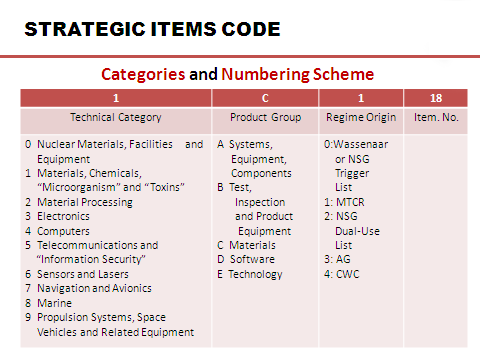
Is there any correlation between HS Code and ECCN Code? How do we identify which ECCN code to be used?
To date there is no correlation of HS and ECCN code. In the early implementation of STA 2010, HS Code was incorporated into the Strategic Items List to provide as guidance to the companies.
How do I determine whether my product is a strategic item?
The Strategic Trade (Strategic Items) Order 2010 is the list to refer to determine whether your product is a strategic item, whereby it is divided into two categories, i.e. Military List and Dual-Use Items. The list does not indicate HS Code of the strategic item, but 5 alpha-numerical characters which are used in international export-control regimes (the codes may vary according to country). You must use the alpha-numerical code to apply for permit under STA 2010.
It is important for you to know your product such as the specification, composition of materials used to manufacture, as well as possible end-use of the item before you check the Strategic Trade (Strategic Items) Order 2010.
One of the ways to determine whether your product is a controlled item is to check with the manufacturer of the product, as well as the importers and competitors. If your product meets the description of a strategic item, you are required to apply for a permit. However, if it is not listed, it does not mean that it is not a strategic item as it may fall under the category of unlisted items.
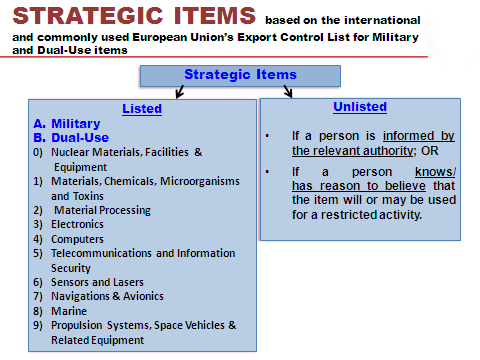
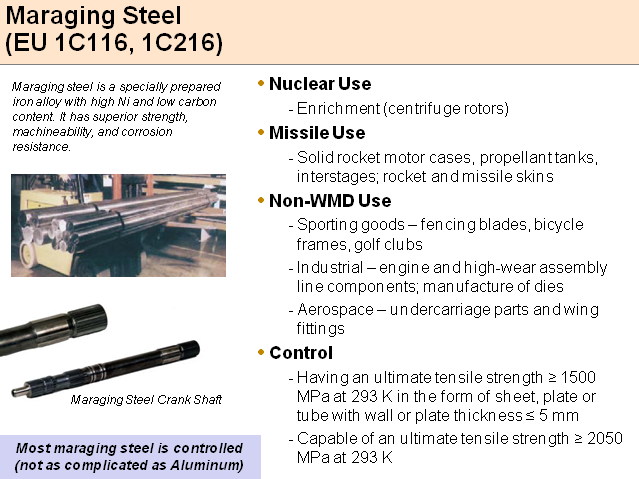
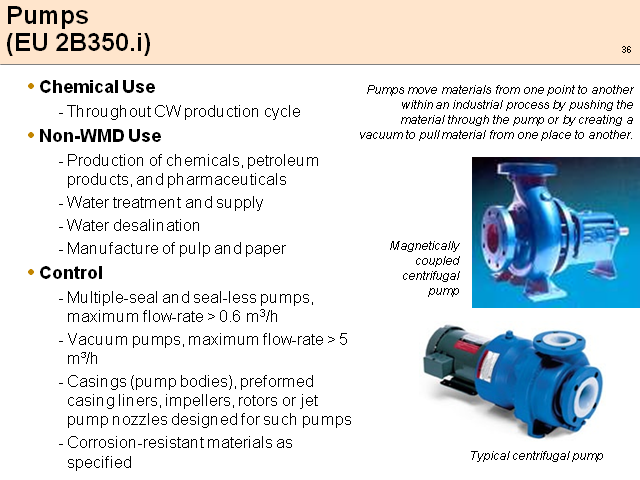
What are “unlisted items”?
"Unlisted items" are items that may be used in a restricted activity but are not prescribed as strategic items under the Strategic Trade (Strategic Items) Order (Amendments) 2018. Anyone who intends to export, transship or bring in transit any unlisted items need to notify the relevant Authority his intention to do any of the controlled activities 30 days before such activity is going to take place if he :
i) has been notified by the relevant Authority; or ii) otherwise knows; or
iii) has reasons to believe that any unlisted item will or may be used for a restricted activity.
A permit has to be obtained for the export, transit or transshipment of an unlisted item.
What if only certain parts of the finished product are strategic items? Is a STA permit required?
In such an instance, please forward your technical specifications to STS for evaluation.
If I am handling or storing items for a non-resident in my warehouse, how do I ensure that the products are strategic or non-strategic items?
It is your responsibility to ensure whether the item is strategic or not. For this purpose it is imperative that you obtain the classification from the manufacturer or owner of the goods. STA 2010 has extraterritorial jurisdiction and can be used on the owner of the items in overseas if the information provided is not accurate or falsified.
If the products I am exporting are not in the strategic items list, do I still need to register under STA 2010?
Products that are not in the strategic items list do not require a permit. However, STA 2010 places the obligation on the exporter to declare the item as an unlisted item if he is informed by the relevant Authority or otherwise knows, or has reason to believe that any unlisted item will or may be used for a restricted activity.
How to apply STA permit for unlisted items?
The Secretariat has created new category codes for unlisted items as follows:
MU999 - Military Items
0U999 - Category 0 : Nuclear Materials, Facilities & Equipment
1U999 - Category 1 : Materials, Chemicals, Microorganisms and Toxins
2U999 - Category 2 : Material Processing
3U999 - Category 3 : Electronics
4U999 - Category 4 : Computers
5U999 - Category 5 : Telecommunications and Information Security
6U999 - Category 6 : Sensors and Lasers
7U999 - Category 7 : Navigations & Avionics
8U999 - Category 8 : Marine
9U999 - Category 9 : Propulsion Systems, Space Vehicles & Related Equipment
Will Customs be conducting spot-checks on shipments to determine whether the items are strategic or not?
A field has been created in the K2 and K8 customs forms which require all exporters to declare items exported under STA 2010. This is a mandatory requirement. As authorized officers under the Act, Customs officials can make spot-checks on any items exported prior to shipment. It is the prerogative of the Royal Malaysian Customs to request for additional information such as specifications of the products to determine whether the product is a strategic item. The Customs will however allow the export pending evaluation of the items.
Based on the manifest provided on transit and transshipment of items, the Port Authorities may request specifications of the product or approval from authorized agencies before the items are allowed on its journey to the final destination.
Is there any assistance provided on classification of items under STA 2010?
Yes, samples and specifications of the item may be submitted to the Secretariat for evaluation. If the evaluation incurs cost for laboratory testing, it should be borne by the applicant. It should be treated as a last resort. It may take longer time as it needs to be sent to technical institution for their determination.
Are all aircraft parts and components controlled under STA?
In general, aircraft parts and components for commercial/civil use are not controlled under STA. However, in order to determine it, companies are responsible to check with the Category Code and Items Description in the Strategic Items List, in particular the following Category Codes:
(i) ML 10
(ii) 7A003
(iii) 9A001
(iv) 9A003
Companies must also provide a detailed description in the Customs Declaration Form. Samples as follow:
(i) Aircraft parts for commercial/civil use
(ii) Aircraft parts for military use
There are also exclusions from the requirement of STA permits provided in the 4 Category Codes above which will require companies to submit certification from civil aviation authorities of the Wassenaar Arrangement (WA) States [please refer this link for the list of WA States [https://www.wassenaar.org/about-us/] directly to the Royal Malaysian Customs.
Permit Application Broker Registration And Internal Compliance Programme (ICP)
What types of permits are available under STA 2010?
Types of permits available under the Act are as follows:
(ii) bulk permit;
(iii) multiple-use permit; and
(iv) special permit.
For brokering activities of strategic items, a person needs to obtain the certificate of brokers for strategic items.
Which permit type is suitable for my company?
Before applying for permit, you need to consider your business needs, business activities and the permit which you may qualify for. The following is the description of each permit:
(i) Single-use permit – is a one-time export, transit or transshipment permit for a country or destination.
(ii) Bulk permit – is a multiple exports, transit or transshipment permit for a single country or destination. An application for Bulk permit is only considered if the company applying for the permit has an Internal Compliance Program (ICP) approved by the Strategic Trade Secretariat
(iii) Multiple-use permit – is a multiple exports, transit or transshipment permit for different countries or destinations. An application for Multiple-use permit is only considered if the company applying for the permit has an Internal Compliance Program (ICP) approved by the Strategic Trade Secretariat.
(iv) Special permit – is a single-use export, transit or transshipment permit to a restricted end-user
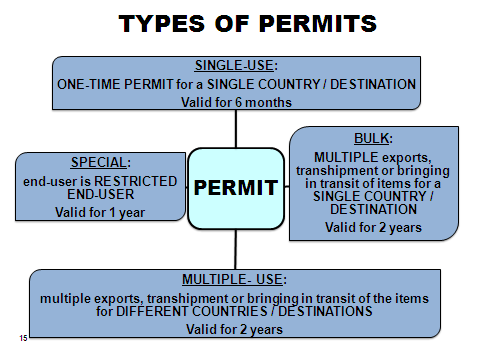
What is an Internal Compliance Program (ICP)?
An ICP is:
(i) A set of internal procedures implemented within the company that ensures transactions satisfy the requirements under STA 2010. An ICP is a prerequisite for companies that wish to avail themselves of bulk and multiple-use permits under STA 2010.
(ii) A commitment taken voluntarily by a company to support the authorities by ensuring that internal controls and procedures are in place to safeguard the company from being manipulated by proliferators of WMD.
(iii) The commitment to the ICP is satisfied when the company has established procedures to ensure that thorough investigations and due diligence of the buyer and the end-user had been undertaken prior to shipment and export of strategic items and/or technology.
The Key Elements of an ICP:
(a) A written statement of intent on export controls;
(b) A designated officer appointed at the level of management to oversee the implementation of the ICP and his/their responsibilities and positions stated clearly in the company;
(c) Clear export control policy and procedures prepared on the company's letterhead;
(d) Transparent reporting and decision-making responsibilities for exports;
(e) Knowledge of customer and the end-use of the items exported;
(f) Centralised processing for the export of strategic item;
(g) Early warning and screening of all enquiries and orders; and
(h) Proper documentations of all transactions of strategic items to be kept for at least six years.
(iv) ICP Guide and Checklist on the required documents to be submitted to apply for an ICP is as in www.miti.gov.my > STA 2010 > Resources > Internal Compliance Program. Submission of the documents to the Secretariat should be submitted manually with a letter on the company's letterhead and signed by the designated person in charge of export control.
When should I apply for the export permit / broker registration certificate?
An application for export permit / broker registration shall be made not less than the following timeframe before the strategic items are exported/ act of brokering is taken/ strategic technology is transmitted:
(i) single-use permit - 30 days;
(ii) bulk permit - 30 days;
(iii) multiple - use permit - 30 days;
(iv) special permit - 30 days; and
(v) broker registration certificate - 30 working days.
STS Client Charter to approve/reject the permit applications is 5 working days, upon receiving an application with complete required documentation.
What is the validity period for the export permits / broker registrations?
(i) single-use permit - up to 6 months;
(ii) bulk permit - up to 2 years;
(iii) multiple-use permit - up to 2 years;
(iv) special permit - up to 1 year; and (v) broker registration certificate - 1 year
How to apply for STA permit?
Application for permit under STA 2010 is done online except for application for broker registration certificate, which is done manually.
There are two phases involved:
(i) Pre-registration (Phase 1)
- A company needs to subscribe to DagangNet Technologies (DNT) to obtain the user ID and Password which are required for the e-permit registration.
- After filling-in the required information online, application for registering the company can be submitted.
(ii) Permit Application (Phase 2)
- Company will obtain a digital signature token once their registration is approved. This token is required for permit application. The digital signature token is issued to the company under an authorised applicant‘s* name, by DNT.
- Company then can submit their application for permits online by using the digital signature token.
- Processing of application takes 5 working days upon receiving complete application, with all required supporting document.
*Note: Should this authorised personnel resigns, he/she should return the token to the company. The company should then inform DNT of the change in the authorised personnel to ensure that the token is de-activated accordingly. In case of a lost or misplacement of token, a police report has to be made by the company and a copy of the report should be sent to MITI before company can apply for a new token.
The process flow for application of permit:
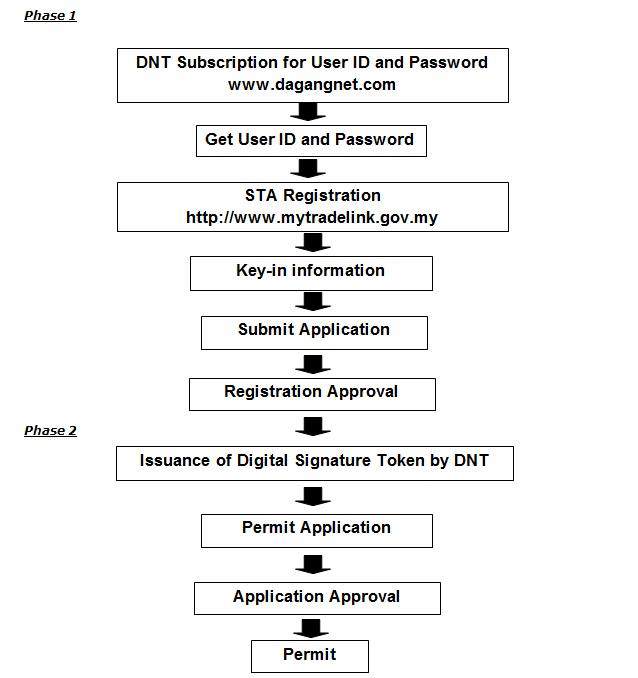
Who are the licensing authorities involved in issuing STA permits?
There are four (4) authorities issuing permits under STA 2010 as follows:
(i) Strategic Trade Secretariat, Ministry of International Trade and Industry (MITI);
(ii) Atomic Energy Licensing Board (AELB);
(iii) Malaysian Communications and Multimedia Commission (MCMC); and
(iv) Pharmaceutical Services Division (PSD), Ministry of Health.
Who are the enforcement agencies under STA 2010?
The nine (9) enforcement agencies under STA 2010 are as follows:
-
Atomic Energy Licensing Board (AELB);
-
Malaysian Communications and Multimedia Commission (MCMC);
-
Pharmaceutical Services Division, Ministry of Health;
-
Royal Malaysian Customs Department (RMCD);
-
Royal Malaysia Police (RMC);
-
Malaysian Maritime Enforcement Agency (APMM);
-
Central Bank of Malaysia (BNM);
-
Securities Commission Malaysia (SC); and
-
Labuan Financial Services Authority (LFSA).
What are the documents to be submitted when applying for permit?
The application for permit/renewal of permit for export/ transit/ transshipment and special permit needs to be accompanied by the following supporting documents:
(i) End-Use Statement;
(ii) Product Technical Specification; and
(iii) Others (as may be required by licensing Authority).
Which price is to be indicated in the permit application: is it the price charged to the end-user or the final price that end-user charged to their customers?
Price indicated in permit application is to reflect price of goods sold to the end-user.
Can the exports exceed the quantity and value approved in multiple and bulk permits?
Exports should be based on total quantity and value as approved in the permit. Company is to ensure forecasting is done based on the price fluctuation trends before submitting the permit application.
Is there any quantity tracking mechanism in the DNT e-permit system or Sistem Maklumat Sistem (SMK)?
At present, there is no tracking system for the quantities exported using a STA permit. However, based on the validation field, SMK will prompt an error if the quantity exported exceeds the quantity stated in the approved permit.
Under what circumstances are permits denied, suspended or revoked?
Permit can be denied, suspended or revoked at any time by the relevant Authority on the following grounds:
(i) the applicant has been convicted of an offence under the Act or any related laws;
(ii) the act in respect of which the application for a permit is made would contravene or result in any act which would contravene the Act or any related laws;
(iii) the applicant was previously granted a permit which was subsequently revoked;
(iv) in the opinion of the relevant Authority, the act in respect of which the application for a permit is made or is likely to be related to or in furtherance of any activity, the object or purpose of which is contrary to public interest or national security;
(v) in the opinion of the relevant Authority, the act in respect of which the application for a permit is made would contravene or result in an act which would contravene a decision of the United Nations Security Council or any international agreement to which Malaysia is a party;
(vi) where the strategic items or unlisted items in respect of which the application is made is to be brought into Malaysia, or transmitted, from an exporting country and the export or transmission of the strategic items or unlisted items from that country or its acquisition or disposal is regulated by that country, the approval from the relevant authority of that country has not been obtained for such export, acquisition or disposal;
(vii) the applicant refuses or is unable to furnish any document or information required by the relevant Authority in connection with his application;
(viii) the applicant has given, in connection with any application made by him or on his behalf :
- any information that is false or misleading in a material particular; or
- any document which contains a statement or omits any matter which renders the document false or misleading in a material particular; or
in the opinion of the relevant Authority, the applicant is not a fit or proper person to hold the permit for any other reason.
What type of permit do we apply for hand-carry of strategic items?
If you are carrying a strategic item including technology, a permit under STA 2010 is required. Since it is carried by an individual, a single-use permit will be issued. The relevant EUS should accompany the application, along with the technical specifications, a copy of the passport and travel itinerary of the individual carrying the strategic item. Application for the permit to hand-carry strategic items has to be made to the Secretariat.
Is it sufficient for a parent company to subscribe to or register with DNT or are branch companies required to subscribe as well?
It depends on applicant’s business model. If only your parent company exports, it is sufficient for the parent company to register. The branches need to be registered under STA 2010 if they are also involved in the activities under STA 2010.
If my company is appointed by the Government to export/transit/tranship Strategic Items on behalf, do I need STA permits?
Regulation 22 of the Strategic Trade Regulations 2010 provides for an exclusion of STA permits for activities carried out on behalf of the Government of Malaysia. Companies are required to present the appointment letter by the relevant agency to RMC to obtain this exclusion.
If my company is responsible for handling shipments and cargo with Strategic Items on transit/tranship, do I need STA permit?
Generally, Regulation 25 of the Strategic Trade Regulations 2010 provides for the non-requirement of permit for transit and transhipment activity provided:
i. the strategic item arrives/immediately taken into a free commercial zone;
ii. the strategic item remains in the free commercial zone at all times before export out of Malaysia; and
iii. the strategic item remains in the free commercial zone for no more than 30 days.
However, a permit is required/applicable:
i. to any items OR End-users subject to the Strategic Trade (Restricted End-user and Prohibited End-Users) Order 2010 - Individuals/ entities/ countries (North Korea, Iran, Congo, Ivory Coast, Lebanon, Sudan, Afghanistan, Iraq, Liberia, Rwanda, Somalia, Eritrea, Libya);
ii. to any unlisted items under Section 12 of STA 2010;
iii. to items listed under the Third Schedule as follows:
A. MILITARY ITEMS
1. The strategic items specified in the following category Codes in Part 1 of the Schedule to the Strategic Items Order:
- ML1;
- ML2;
- ML3;
- ML4;
- ML6;
- ML7.b.1., 2. and 3.;
- ML7.c.;
- ML8.a.1., 2., 3., 4., 5., 7., 10., 11., 13.a., I3.c., 15., 18., 19., 20., 21., 23., 26., 27., 28., 32.j., 33., 34.;
- ML8.b.I. to 5.;
- ML8.c.1., 3. to 9.;
- ML8.d.1., 2., 3., 5., 6., 8., 9 10.;
- ML8.e.1. to 6.. 8. to 13., 15. to 18.;
- ML8.f.;
- ML8.g.;
- ML9; and
- ML10.
B. DUAL-USE ITEMS
2. The strategic items specified in the following Category Codes in Part 2 of the Schedule to the Strategic Items Order:
- 0A, 0B, 0C;
- 1C350.1. to 9., 11., 12., 13., 17., 18., 19., 21., 22., 23., 26. to 36., 38., 46., 51., 52., 54. to 57., 59., 63.;
- 1C351.a.2., 4., 5., 7., 8., 10. to 17., 19., 31.;
- 1C351.b.I., 3., 4.;
- 1C351.c.1., 2., 3., 4., 7., 8., 9., 13.;
- 1C351.d.1., 2., 4. to 7., 12.;
- 1C352.a.1. to 4., 9., 10., 12., 14., 15., 17;
- 1C352.b
- 1C354.b.1., 5.;
- 1C354.c.1.,
- 1C450.a.; and
- 1C450.b.;
End-Users and End-Use Statement
Who are the restricted and prohibited end-users?
The restricted and prohibited end-users are individuals, entities, countries and destinations that are designated by the United Nations Security Council Resolutions or Minister of International Trade and Industry following their suspected involvement in any restricted activities.
Is an export of strategic items allowed to restricted or prohibited end-users?
Exports of strategic items are not allowed to prohibited end-users under any circumstances. However, you are allowed to export strategic items to restricted end-users provided that applicant is granted a special permit by the Strategic Trade Secretariat.
What is an end-use statement (EUS)?
An EUS or also known as Form 5 is a statement that contains information on the end-user and end-use of the items that will be exported.
Do we need to attach EUS for all applications?
Yes. EUS is required for all applications of single-use, bulk and special permits. However, for multiple-use permits, applicant may attach at least one EUS with the application. It is the exporter‘s responsibility to keep all EUSs from all listed importers in the permit at their premises. These EUSs are to be made available upon request by the authorities.
In cases where it is difficult to identify the final end-user due to certain business model, can a distributor be considered an end-user?
The Form 5 was amended effective 1 December 2011, taking into consideration the different business models. This new Form provides for declaration of items for consumption, production, distribution and repair. If the EUS is provided by the distributor, the distributor bears responsibility for taking adequate steps to ensure that the final end user is not involved in any restricted activities. The distributor is also subject to STA 2010 (if based in a third country) with regard to export of strategic items, under its extra-territorial provision.
What if the consignee is a distributor and refuses to provide the End-Use Statement (EUS)?
EUS is mandatory requirement under STA 2010. If a distributor is unable to produce the EUS, the exporter is advised not to proceed with the transaction.
Can a written contract be used to replace the EUS?
No. EUS is a form published in Government’s Gazette. In addition, a written contract does not indicate the final use of the item.
Can the EUS for an existing multiple-use permit be used again for a new permit application?
When applying for a new multiple-use permit, a new EUS is required. The new EUS will indicate the quantity of the items that will be exported in the next two years and will also address changes that might have taken place at the end-user level such as contact details, etc.
To what extent is the exporter liable for information provided by the end-user?
It is the responsibility of the exporter to undertake due diligence on all end-users before applying for a permit. Due diligence is important especially for new end-users. Extra caution should also be exercised for end users from restricted countries.
Is it possible to add new end-user(s)/importers to an existing multiple-use permit?
Yes. The new end-users/importers will have to be pre-registered via the e-permit system. After which a manual submission of the end-use statements from the new importers to the relevant Licensing Authority, will have to be undertaken. When submitting application to add the new importers, you have to ensure the following:
(i) a cover letter on your company‘s letterhead listing the new importers/end-users;
(ii) the permit number of the multiple-use permit to which the new importers/end users are to be added to;
(iii) with the addition of the new importers/end-users, the quantity approved in the original multiple-use permit will not be exceeded; and
(iv) there is no change in the product (category code) to be exported to the new importers/end-users.
Technology Transfers and Research
What do you mean by export of technology?
Export of technology means transmit or transfer of information and data, by any means to a destination outside Malaysia, in any form, for the design, development, production or use of another item. This includes transfer of technical data, technical assistance and software.
Is all technology controlled under STA 2010?
Technology is only controlled if it is required for the development, production or use of goods or software which are listed as strategic items in the Strategic Trade (Strategic Items) Order 2010, or if the technology itself is specifically described in the Order.
Are all researchers required to apply for export permit when sending information related to technology to a person outside Malaysia?
A researcher should examine the research information and determine whether it is controlled under STA 2010. If it is, the researcher must obtain the approval from the relevant Authority before sending off the information.
How can the intangible transfer of (strategic) technology (ITT) be controlled in my company?
Controlling something that is intangible is a challenge. Education is essential in this matter. Under STA 2010, it is your responsibility to ensure that your employees are well educated on ITT. The company‘s policy regarding ITT needs to be communicated to all employees who have access to the strategic technology. You may institute access restrictions to various levels of technology according to their sensitivity. Clear guidelines and procedures will ensure a systematic control of technology within your company.
Customs Declaration
What is the liability of a freight forwarder who has made wrong declaration on the K2 and K8 forms regarding strategic items?
It is an offence under STA to make wrong declaration. Manufacturers and forwarders are advised to use the shipper‘s instruction for every shipment to indicate items exported are strategic or otherwise. Such advice can be conveyed through any means i.e. e-mails, or invoice.
Can strategic and non-strategic items be declared in a single K2/ K8 (?) Customs Declaration form?
In order to facilitate dealing with Royal Malaysian Customs, it is advised that companies to declare strategic and non-strategic items in separate K2/K8 forms.
Can a Customs Declaration K2 form be amended after the item was exported if the export was wrongly declared?
No. It is an offence under STA 2010 to make a wrong declaration in the Customs Form.
If a shipper comes to know that the item exported has been wrongly declared, what can the shipper do? Can the declaration be retracted?
Declaration made to the Customs cannot be retracted. Currently, there is no provision under the STA 2010 to rectract declaration for item that has been exported. It is an offence to make wrong declaration and subjected to heavy penalties. It is the permit holder‘s responsibility to inform the Secretariat and the Royal Malaysian Customs regarding the wrong declaration. Appropriate action will be taken by the authorities for violation under the Act.
Is it possible for the exporter/shipper to view the Sistem Maklumat Kastam (SMK) in order for them to ensure correct declaration by the freight forwarder?
No, the SMK system cannot be accessed by the exporter/ shipper. At present, It is meant only for use of Customs officials.
How can we ensure that our freight forwarder has declared our product as strategic and has quoted the STA permit number in the customs declaration?
You may request your freight forwarder to print out the Customs declaration form for you to check if the correct STA permit number has been indicated.
How to declare the movement of strategic items within Malaysia?
STA does not cover import thus there is no declaration of movement of strategic items within Malaysia required under the STA 2010.
STA declaration in K2 and K8 forms when the movement of goods involve FTZ, within Malaysia.
STA 2010 does not control the movement of goods to FTZ or within Malaysia as the activity does not fall under the definition of export under Section 2 of STA. Company should tick “No” in the forms as the goods are considered not to be exported out of the country.
Violations and Penalties
Will a Malaysian company operating/ located outside Malaysia be prosecuted under STA 2010 should there be any violations?
A company needs to comply to the local export laws of the residing country. Any non-compliance to domestic export control laws will have impact on the credibility and reputation of its affiliates in Malaysia, and may be subjected to penalties.
What will happen to the permit holder if the item exported is found to be used in restricted activities?
It is the permit holder’s/ exporter’s responsibility to undertake due diligence on your importer before exporting. It is therefore important for you to know your product and know your customers well. However, if such an incident happens despite all your endeavours to ensure that the STA 2010 is complied, you should provide documentary evidence to prove that the company and its personnel are not involved knowingly/unknowingly in the transaction.
Is there any voluntary disclosure provision under STA?
At present there is no provision for voluntary disclosure under STA 2010.
What can a company do if a strategic item with a valid export permit goes missing?
The company should lodge a report with STS and submit DVS for the lost shipment within two months after the shipment, together with supporting documents. The outcome of the 20 investigation by the company on the lost shipment should also be forwarded to the Secretariat.
Evaluation of STA Compliance
Will the companies be notified prior to an audit by the Secretariat?
Yes. However, we may consider auditing without prior notice should we have strong reasons for suspecting violations.
Do I have to maintain records of exports of strategic items?
Yes. All documents related to permit / broker registration must be kept and maintained for at least 6 years. For further details, please refer to regulation 30 of the Strategic Trade Regulations 2010.
Are soft copies of documents sufficient as proof of record keeping?
Yes.
Is training provided by external trainers on STA 2010/export control and training that are conducted in company's intranet considered as part of training required under ICP?
Yes, as long as the topics covered are related to trade procedures and incorporating elements of export control.
Delivery Verification Statement (DVS)
How does the company determine the date of export when submitting the Delivery Verification Statement (DVS) or also known as Form 6 for bulk and multiple-use permits?
The company can indicate the period of export or any specific date of export as per the request of the relevant authority. DVS submission for bulk and multiple-use permits are upon request of the authorities but companies need to ensure that all related shipping documents are retained for at least 6 years after the date of export.
Which date of export is to be indicated in DVS column for transshipments, original export date from country of origin or date of transshipment?
Date of export in DVS for transshipment should be the date when the item transshipped in Malaysia.
Is the name and title of authorized representative in the DVS limited only to the company’s registered Authorized Applicant? In the End User column on the said form, does the company indicate the end user as per EUS, or the importer’s recipient of that pa
The name and title of authorized representative is not limited only to the registered Authorized Applicant. It can be anyone in charge of exports and trade compliance within the company. Whereas in the end user column, company to indicate the end user as stated in the EUS.
Will there be any acknowledgement from MITI upon company’s submission of the DVS?
MITI will acknowledge the receipt of the document and will contact the company should we need further clarification.
Can the Customs K2/K8 Form be considered as proof of delivery (POD) for DVS submission?
The Customs K2/K8 Form can not be considered as a POD. POD is a form of confirmation provided by the importer/end user that the strategic item has reached the end user. It could be an email confirmation of goods received or delivered provided by the end-user or the courier service provider.
Licensed Manufacturing Warehouse (LMW), Bonded Warehouse and Free Trade Zone (FTZ)
Is sending products from a Free Zone to an LMW in Malaysia considered an export under STA 2010?
Export under STA 2010 is defined as taking an item out of Malaysia by land, sea or air. The item must physically leave the country to be considered an export. Selling to customers within the country such as those in LMWs or to customers in Sabah, Sarawak or Pulau Langkawi are not considered exports under the Act and such transactions will therefore not require an export permit.
What is my responsibility if my company operates in Free Commercial Zone?
Strategic Item which is on transit or transshipment is exempted from a permit under STA 2010, if remains in the Free Zone less than 30 days. However, this exemption does not apply for Schedule 3 item under the Strategic Trade Regulations and destinations that are restricted end-users under the STA. It is the responsibility of the company handling these goods (on transit and transshipment) to apply for the permit if the product is a strategic item.
Does Regulation 25 apply to bonded warehouse?
Regulation 25 spells out the conditions for non-requirement of permit for transit and transshipment. The conditions are applicable to bonded warehouses as well.
STA 2010 (Amendment) 2017
What is the new format of the End Use Statement (EUS) and is there a manual to use EUS?
There is no specific format. However all evaluation elements in the current Form 5 such as the item, its value and volume as well as its end user and end use must be submitted to ensure effective and efficient evaluation by the licensing authorities.
Is there any flexibility for EUS format under the amendments? Can company use different documents to cater different requirements from the clients, especially from other countries’ government agencies?
STA have provided enough flexibility under the recent amendments of EUS. Should the EUS could not be provided as per gazetted form, companies may provide a full set of documents below that can be used for the authorities to evaluate the application:
- Purchase Orders;
- Invoice;
- Bill of Lading/Airway Bill;
- Letter of assurance/Certified letter;
- Packing List;
- Agreement/ Contract; and
- Advanced manifest.
Miscellaneous
Limitation of the quantity in the permit application. Will there be any improvement to cater a larger quantity?
The existing STA e-Permit ties with SMK Systems, thus any changes must be made concurrently. Royal Malaysia Customs is in midst of developing uCustoms which may cater such request.
Is there any facilitation under STA for Customs Prior Release?
In order to facilitate trade, RMC introduced provisional declaration of exported goods which is covered under Section 87A, Customs Act 1967. However, this facility cannot be used for export of strategic item. STA 2010 requires all export, transit and transhipment of strategic item to obtain necessary permit prior to the transaction. As such, Section 3 STA 2010 prevailing provision will supersede Section 87A and any other with regard to export control.
What if the mode of transport changed in the approved permit, is there a need to apply for a new permit?
As long as the item, its quantity and value as well as the end user is still the same, there is no need to apply for new permit. However, the applicant is advised to notify MITI, for us to facilitate the transaction when dealing with RMC.
How much does it cost for STA permit fee?
No charges incurred to process STA permit applications. However, access to the system is handled by a service provider, DagangNet. Kindly contact careline@dagangnet.com for costing details.
Which industry sectors are frequently related with export control under STA 2010?
The main sectors relevant to export control are (not limited to) Electric and Electronic, Defence Industries, Manufacturing, Chemical Products and Oil and Gas.
Is the new amendment of this act put into consideration the reverse logistics? Can the same permit be used again for the reverse logistics?
Based on our permit definition, it is possible for multiple/bulk permit but not for single permit. Provided that the quantity does not exceed the approved multiple permit.
ePermit System
Issues with DagangNet system such as frequent system errors, security, support service.
The issue with DagangNet can be brought up directly to DagangNet (careline@dagangnet.com) and copied to STS (admin.sts@miti.gov.my) for our further follow-up.
Contact Us
How can I know more about the Strategic Trade Act and its implementation?
For any query or clarifications pertaining to STA 2010, please contact Strategic Trade Secretariat, Ministry of International Trade and Industry, Level 4, MITI Tower, No.7, Jalan Sultan Haji Ahmad Shah, 50622 Kuala Lumpur; e-mail: admin.sts@miti.gov.my or our hotline number: 03-8000 8000.







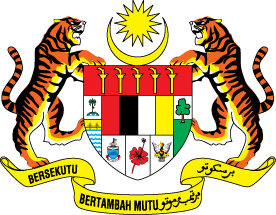





 Home
Home








